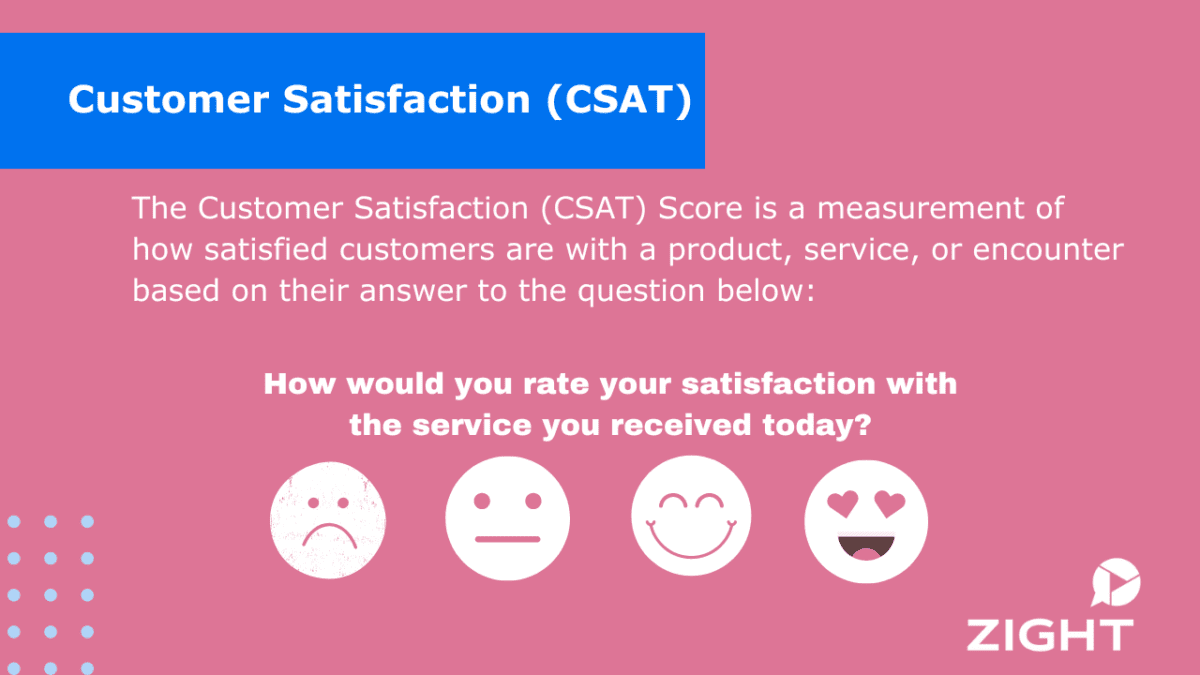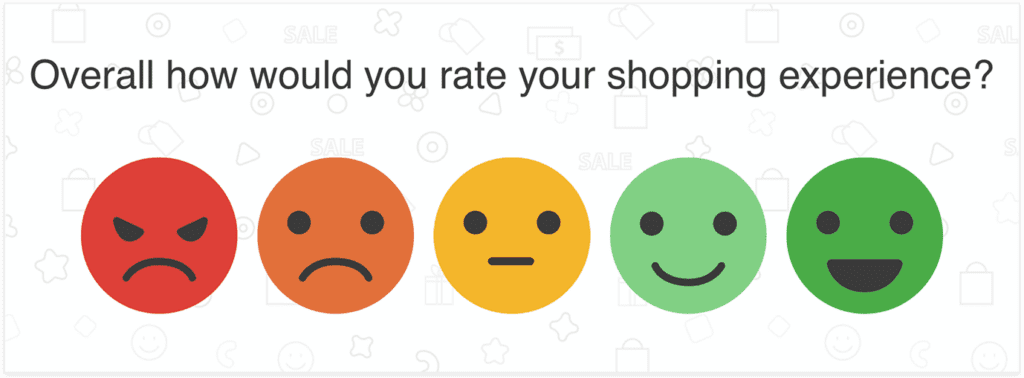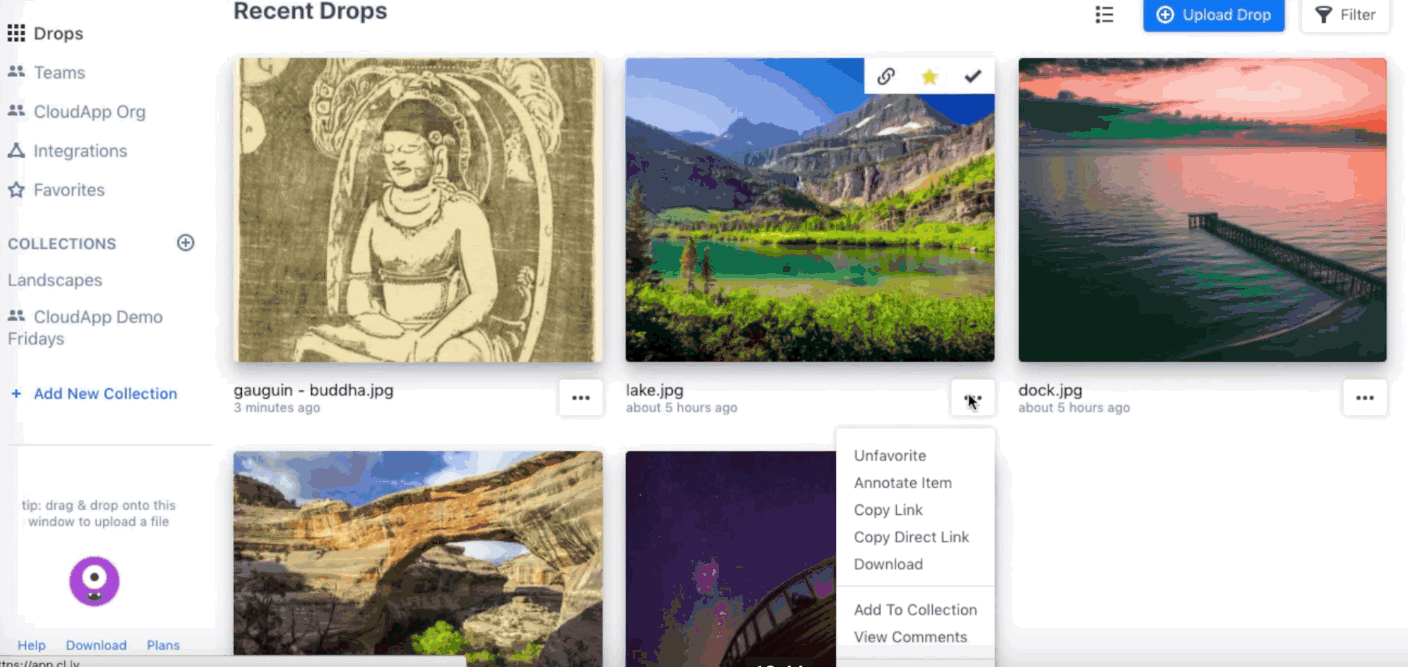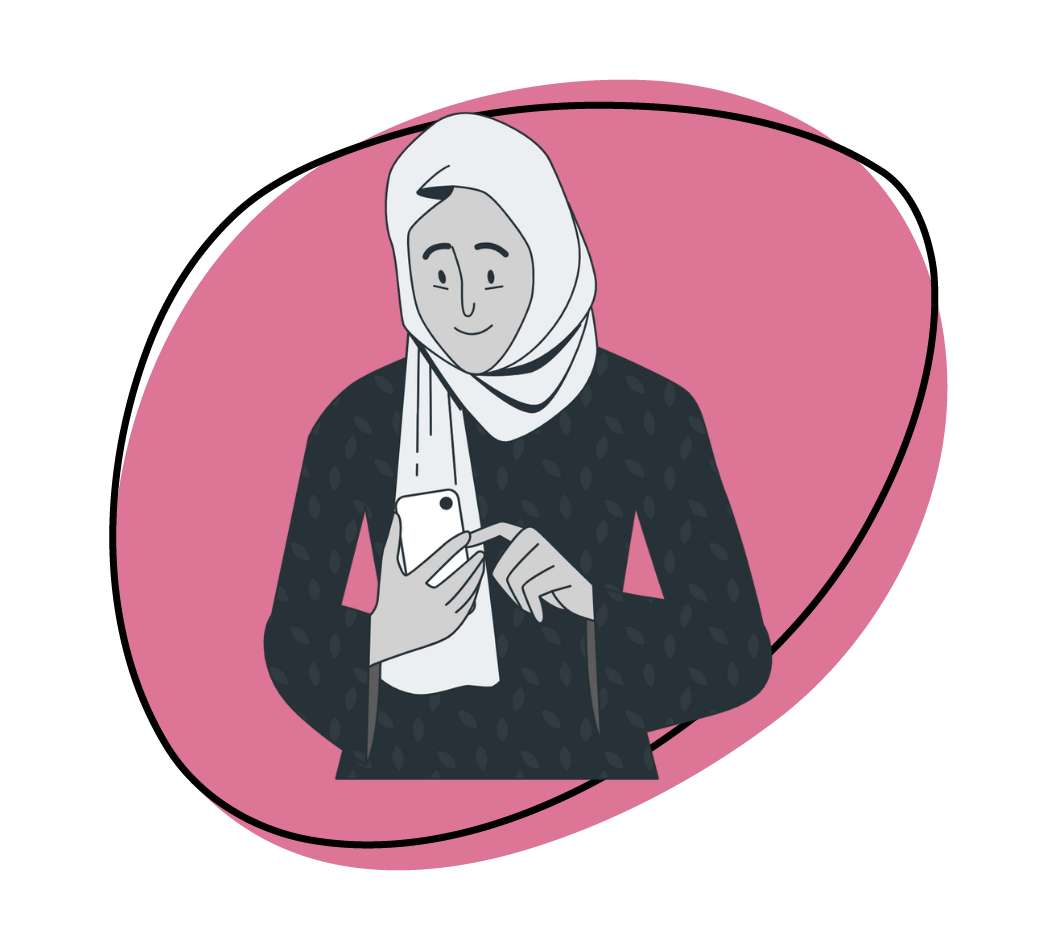Is your customer satisfaction rating thriving, or are your customers quietly exploring other options? Just completing a sale doesn’t guarantee that your customers involved are satisfied.
Have you ever stood in line with a product because you desperately needed it, even though the experience or pricing was subpar? It’s extremely likely that the next time you need that product, you will search elsewhere.
In the digital age of commerce, the switching cost of most products is extremely low. One or two mistakes and a customer may begin to give your competition a second look. Therefore companies must do everything possible to maintain a positive customer satisfaction rating.
Luckily, we have provided strategic approaches to solidify customer happiness using Zight (formerly Cloudapp) and its suite of tools. From leveraging innovative tools to fostering seamless interactions, these methods will help elevate your customer satisfaction score (CSAT) and ensure a devoted customer base. Let’s not wait anymore!
Every Support Ticket is an Opportunity
After spending hundreds, if not thousands, of marketing dollars to secure a customer, retaining that relationship should be your number one priority. Every ticket that comes through your support system is an opportunity to increase and quantify satisfaction. Why is this so important for customer support teams?
Satisfied customers are more likely to cross-purchase, repurchase, and typically increase the average amount they spend with your company. They also cost less to retain and tend to use customer support less. To reap the benefits of customer success, organizations must find cost-effective methods to measure customer satisfaction accurately.
What is Customer Satisfaction Rating (CSAT)?

Customer Satisfaction Rating (CSAT) is a metric used to assess how satisfied customers are with a product, service, or overall customer experience provided by a company.
It measures customers’ contentment or happiness after interacting with a business. CSAT is often expressed as a percentage, indicating the proportion of satisfied customers out of the total number of respondents.
The CSAT score is based on the responses received from customer satisfaction surveys or feedback forms. This metric is essential for businesses as it directly reflects how well they meet customer expectations and deliver on promises.
High CSAT scores indicate happy customers who are more likely to be loyal, repeat purchasers, and advocates for the brand. On the other hand, low CSAT scores can signal potential issues and areas for improvement.
How is CSAT Measured?

CSAT is important for measuring customer satisfaction using customer feedback surveys. These CSAT surveys typically include a question asking customers to rate their satisfaction with a recent experience on a scale (e.g., 1 to 5 or 1 to 10). You can collect data to calculate customer satisfaction score (CSAT).
CSAT Formula: CSAT Score = (Number of Satisfied Customers / Total Number of Respondents) x 100
For example, if 200 customers respond to a CSAT survey and 160 of them indicate they are “Satisfied” or “Very Satisfied,” the CSAT score would be (160/200) * 100 = 80%.
A CSAT score of 100% signifies that all respondents are fully satisfied, while a customer satisfaction score of 0% means no customer is satisfied. A good customer satisfaction score (CSAT) varies by industry and company, but a customer satisfaction score above 70% is generally considered positive.
While CSAT is essential for measuring customer satisfaction, other customer satisfaction metrics should be considered alongside customer satisfaction score to understand the customer experience better. Each customer satisfaction metric will provide different customer insights into customer sentiment and loyalty. The other customer satisfaction metrics include:
a). Customer Effort Score (CES)
The ease with which customers interact with a company or complete tasks is gauged through the Customer Effort Score. Customers are prompted to rate their effort level on a scale, usually from 1 to 5 or 1 to 10.
b). Net Promoter Score (NPS)
Assessing customer loyalty and the likelihood of recommending a company to others is achieved through the Net Promoter Score. Customers are asked to rate their likelihood of referral on a scale of 0 to 10.
c). Customer Service Satisfaction (CSS)
This metric quantifies customer satisfaction with the service they receive. It encapsulates customer service representatives’ or teams’ engagement, support, and assistance.
d). Customer Churn Rate (CCR)
The Customer Churn Rate indicates the percentage of customers who cease business interactions within a designated timeframe. A lower churn rate indicates higher customer experience and loyalty.
e). Customer Health Score (CHS)
This statistic evaluates the overall health and satisfaction of a customer or account. It provides a numerical insight into customer engagement, loyalty, and churn risk.
f). Customer Reviews
Customer satisfaction is also quantified through online ratings and reviews on platforms such as social media, e-commerce sites and review websites.
How to Improve Your Team’s CSAT
When it comes to improving a metric such as CSAT, speed and creativity are everything. Zight is an all-in-one communication tool allowing customer support to bring customers more value at every interaction with visuals. Zight’s screen recorder makes everything task faster.
With the ability to resolve tickets with multiple media tools such as screenshots, videos, and GIFs, Zight is the perfect complement to any customer support team.
Some companies famous for their customer services, such as Amazon and MailChimp, use Zight to communicate more efficiently. This is just one of the ways that Zight can help to improve your customer support.
Is your team committed to providing world-class customer support? There are 10 distinct ways that Zight can help improve your Customer Satisfaction Score (CSAT):
- Reducing Wait Times
- Raising Support Standards
- Helping Your Team to Stand Out
- Minimizing Back and Forth Interactions
- Providing Deeper Levels of Value
- Implement a Customer Experience Program
- Conduct Customer Feedback Surveys
- Enhancing Loyalty through Strategic Customer Engagement
- Inspire Brand Loyalty
- Proactively Engage Unhappy Customers
Let’s explore how you can implement these strategies today as a customer support agent.
1. A Reduction in Wait Times
Ten years ago, the average online browser wouldn’t blink an eye if they had to wait 20-30 seconds for a complicated web page to load. Today, 5 seconds feels like an eternity to your customers. As the speed of technology increases, the patience of the public decreases.
In the modern era, no one wants to wait for anything. We don’t want to stand in line at the bank. We don’t want to wait for an app to load. And we certainly don’t want to wait until tomorrow to hear back from a customer support agent. Even a long wait can result in losing a customer because humans remember negative experiences over positive ones.
One of the most significant advantages of Zight is that it saves your team time. The faster you become, the shorter your wait times will be, and speed benefits both clients and employees.
This increase in speed is achieved through visual communication. The brain is designed to interpret visual cues over text-based documents. A customer can review a visual piece of communication, such as an edited screenshot, up to 60,000X faster than a written email.
A typical customer support agent might spend 5 minutes typing an email response to a customer, who then has to spend several minutes reading this response. An employee using Zight can show their customer exactly how to solve the issue with a GIF in 30 seconds, ready to tackle the next ticket in a minute instead of 10.
2. Raise Your Standards Across the Board
Customer support isn’t a sprint- it’s a never-ending marathon. A few weeks of incredible service can be spoiled by a single day of poor responses.
Customers might tell 10 of their friends when they have received exceptional customer service. However, if this same customer has negative feedback, they will go out of their way to tell 20 people. This is why a customer support team needs to develop consistency in their service. A customer must be confident that any team member can help resolve their issue, no matter when or where that request is sent.
Zight allows an entire team to raise their standards and offer higher value. A customer support team that Zight powers can create “Collections” of employee solutions to share with the entire organization. If an employee creates a video tutorial to help with the customer onboarding process, this video can be instantly shared with any other customer with similar issues.

Sending a half-hearted email is no longer an acceptable response to a customer issue. Elevate your support with comprehensive HD videos, personalized webcam responses, short GIFs, and more.
3. Provide Memorable & Unique Support
What’s your expectation when contacting a company with an issue? 99% of support responses will be an email that contains the required information. A response like this is vulnerable to misinterpretation, takes longer to implement, and is unmemorable.
Zight offers a chance to break the mediocrity and bring your customers a unique experience that goes above and beyond. An animated GIF and an email might solve the issue, but the GIF is a non-traditional response. A simple 10-second video screen capture shows that your company is innovative and knows how to leverage the power of tech. A message with multiple paragraphs is more of a chore than anything else.
Breaking the silence and standing out is more important to a customer journey than ever. When your customer wakes up, they are bombarded with text messages, emails, and news updates. The average employee receives over 80 emails every single day. Don’t allow yourself to become just another email in an inbox. To satisfy your customers, you must grab their attention visually.
Zight even gives you the ability to add emojis to your content. If a customer is having a rough day, it is your job to bring a smile to their face.
4. No More Back and Forth
One of the most frustrating experiences for a customer is having to interrupt their day multiple times to resolve an issue they wish didn’t exist in the first place. It takes a person, on average, 16 minutes to fully re-focus after checking their email. No wonder your customers feel overwhelmed.
Instead of engaging in a series of back-and-forth emails where bits of information are traded, use Zight to implement the following strategies:
- Cut to the chase
- Don’t ask unnecessary questions
- Show, don’t tell
After sorting through a mountain of morning emails, your customer doesn’t have time to read the next New York Times Bestseller of messages. By all means, make their day with a line or two of positivity, then cut to the chase. An annotated screenshot that physically points to the solution is easier to understand.
A GIF that grabs your customer by the hand and walks them through the solution is the best customer support solution you can provide in under a minute flat. Instead of telling your customers what they need to do, simply show them with visual solutions.
And whatever you do, don’t ask unnecessary questions. If you provide the best solution possible, there is no need to meagerly ask, “Does this make sense to you?”. Have confidence in your ability to solve with Zight quickly.
5. Shock Customers With Overwhelming Value
Solving your customer’s issues won’t do the trick if you want to increase your CSAT score. After all, that’s your job.
The companies that tout an impressive CSAT score constantly find ways to bring more value than their competitors. A simple phone call or text-based message is no longer sufficient. One of the ways you can surprise your customers with value is to solve their issues “face-to-face.”
It’s unreasonable to schedule a Skype for every ticket that comes through your system. However, you can still bring a similar experience by responding with a screen capture video, supplemented by a webcam explanation. Zight allows you to record your screen and your webcam simultaneously. This way, you can show your customer the steps they need to follow on your screen and explain it with a smile.
Even when a few lines of text will sufficiently solve an issue, a Zight-powered employee can spend the same time sending a GIF or screen capture.
6. Implement a Customer Experience Program
Develop a comprehensive customer experience program utilizing Zight’s interactive capabilities. Create engaging content such as product demos, walkthroughs, and user guides to enhance customer understanding and satisfaction.
For example, our team launched a customer experience program powered by Zight’s interactive videos and GIFs. As part of onboarding, new customers receive personalized videos showcasing key product features and how to get started.
Additionally, self-help resources in the form of interactive tutorials are available on your website. Customers find these resources highly valuable, create a positive customer experience and increase customer satisfaction with a good CSAT score of 4/5.
7. Conduct Customer Feedback Surveys
Customer feedback is a goldmine of information and can help improve customer success. Pay attention to common themes, sentiments, and recurring issues mentioned by customers. This analysis will provide valuable customer insights that can guide your team in crafting better support solutions and addressing customer needs effectively.
Design CSAT surveys with questions covering customer satisfaction levels, overall experience, and specific support interactions. Use keywords like “customer satisfaction surveys,” “customer feedback,” and “customer satisfaction score” to prompt customers to provide valuable insights.
Your team could send customer satisfaction surveys to customers after resolving their support tickets and gather qualitative actionable data. The CSAT surveys could include questions like:
- How satisfied are you with the support received?
- How satisfied are you with the resolution provided in this support interaction?
- What can we do to improve our service?
- How likely are you to recommend our support services to others based on your experience?
- How often do you engage with our customer satisfaction surveys?
- How likely are you to participate in future customer satisfaction surveys?
- Rate the effectiveness of our customer feedback process
Customers can rate their satisfaction on a scale of 1 to 5 (5 being highly satisfied). Based on the customer satisfaction survey responses, your team identifies areas for improvement, such as reducing response times and enhancing the clarity of support solutions.

We recently introduced a customer satisfaction survey in Zight after each support interaction. One of our customers rated their satisfaction as 4/5 and provided accurate feedback that they were pleased with the quick response but felt the solution could have been explained better.
The collected customer feedback prompted us to enhance communication clarity and ensure our agents use visual aids like GIFs and videos to improve the customer’s experience and demonstrate solutions effectively.
8. Reduce Customer Churn
You’ve probably heard the age-old adage that acquiring new customers costs more than keeping existing ones. To put a number on it, research from the Harvard Business Review shows that attracting new customers can be anywhere from 5-25 times more expensive than retaining the ones you already have.
Yet, pinpointing unhappy customers and their reasons becomes challenging when your customer base ranges in the hundreds, thousands, or even millions. This is where the power of customer satisfaction surveys comes into play. These customer satisfaction score surveys help you spot unhappy customers right before they vanish, precisely at those pivotal customer lifecycle moments. This creates a golden chance to make amends before that customer slips away for good.
By strategically deploying these CSAT surveys at key points in the customer journey, you can identify dissatisfied customers before they decide to leave. This not only allows you to make amends but also prevents you from losing a customer forever.
Turning an unhappy customer into a satisfied one can yield remarkable benefits. Research conducted by Bain & Company reveals that increasing retention rates by a mere 5% can translate to profit boosts ranging from 25% to 95%.
And this is where Zight comes into play. It doesn’t just stop at identifying unhappy customers; it equips you to take immediate action. With its dynamic features, such as annotated screenshots and instructional GIFs, you can engage with dissatisfied customers in a way that is quick, clear, and memorable. Zight helps bridge the gap between frustration and resolution by demonstrating solutions visually.
Incorporating Zight into your customer churn reduction strategy is like adding a precision tool to your arsenal. It enables you to identify and retain customers on the brink of departure and turn their dissatisfaction into loyalty. The synergy of Zight’s technology and your commitment to customer satisfaction can ultimately lead to those substantial profit gains highlighted by Bain & Company’s research.
9. Inspire Brand Loyalty
Harness Zight’s adaptable features infuse your brand identity into every customer support interaction. Infuse your company’s distinctive logo, brand colors, and communicative tone in support communications.
Strengthen your brand loyalty and reinforce positive customer satisfaction ratings by embedding keywords like “brand loyalty” and “customer satisfaction ratings” into your interactions.
For instance, envision your team adopting Zight’s tailor-made templates, ensuring each customer communication showcases your company’s logo and signature colors.
Moreover, your support agents foster connections through warm, personalized responses that align seamlessly with your brand’s core values. This consistency and professionalism foster an environment of trust and brand loyalty, culminating in an impressive CSAT score of 4 out of 5.
10. Proactively Engage Unhappy Customers
Unhappy customers are a significant concern for high customer satisfaction scores (CSAT). Luckily, Zight’s real-time communication capabilities allow you to proactively reach out to unhappy customers and resolve their issues promptly.
To start, you can contact the customers with customer complaints before they contact you. Then, send personalized responses with webcam explanations to show that you value their concerns and are committed to solving them. Turning around unhappy customers can drive increased customer loyalty and improve customer satisfaction ratings.
For example, a customer expressed frustration in their feedback, stating they faced technical difficulties while using our software. To address this, our support agent quickly sent a personalized video message via Zight, walking the customer through the troubleshooting steps. The customer will probably be impressed with the personalized support, which increases their satisfaction level and hence improves customer loyalty.
Your time is your most valuable resource as a customer support agent or manager. Start helping more customers and shocking them with incredible value today by registering for a free Zight account today.
Learn more and get a free trial of Zight here.
